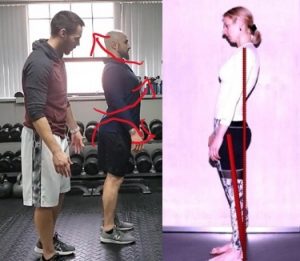Stretching can often be a polarizing topic among rehab and performance specialists.
On one end of the spectrum, you have people who seemingly hand out stretches for every injury and think it’s the solution to everyone’s problem. On the other hand, you have people who believe that you should never stretch and that there are no benefits to stretching whatsoever.
Before we start talking about what is right and wrong, we first need to appreciate what “tightness” really is, so we can discuss the potential reasons why one may choose a particular intervention over another. Hint: It’s not as simple as long or short, stretch, and strengthen! Watch the video to learn the 4 reasons why a muscle ACTUALLY could be perceived as tight!
Ultimately people feel the need for stretching because of “tightness”.
The problem here is that “tightness” is just a sensation, and a muscle can be perceived as “tight” for a variety of reasons. Before we discuss these reasons, it is important to note that bones and joints act and muscles react!
Said differently, your body is always manipulating position. We are never stagnant creatures; we have a constant postural sway! When asked to stand perfectly still we cannot. This is because our body is constantly interacting with gravity and manipulating it around our center of mass. As such we are always moving and always using a variety of strategies to either create (overcoming contraction) or control movement (yielding movement).
There are really three reasons someone would feel “tight”:
Reason 1) A muscle is concentrically oriented or in a state where the tissue sustains contraction at low levels for a prolonged time period.
Reason 2) A muscle is eccentrically oriented or where the tissue sustains a yielding contraction trying to prevent/stop/or reverse movement
Take a look at the picture below. You will see someone on the left displaying both concentric and eccentric orientations due to the anterior orientation of rib cage and pelvis. The individual on the left is utilizing an eccentric (yielding) contraction at the anterior hip to prevent further forward translation of the pelvis. This creates a subsequent thoracic extension followed by rounding of the shoulders to create a counterbalance.
In either instance, the body is trying to organize itself in the best manner it can to manipulate their center of mass around the line of gravity.

**Simple practical takeaway – The individual on the left potentially could benefit from stretching or eccentrically training their quads such as a half-kneeling stretch or eccentric leg lowering exercise that concentrically orients abdominals and takes quads through an eccentric contraction. The individual on the left however likely would not benefit from stretching of the quads because the muscles are in a position of eccentric orientation already.
Reason 3) As a protective mechanism to create rigidity or control depending on the environment, task, and situation. Example: think driving in a snowstorm how the external environment can create uncertainty or lack of control. As a means of creating more internal perception of control the body starts to grip the steering wheel tightly. Essentially creating co-contraction and rigidity around the joint to restrict movement.
Bonus Reason #4) You just performed an intense workout, and as a result there was some eccentric micro trauma to the musculature which occurred. Your intent is that stimulus hopefully results in recovery and net gain of strength/hypertrophy in the long run when programed correctly. However, acutely there will be restricted movement as the body repairs.
Notice in all the above scenarios, stretching may not be the most advantageous thing to be doing.
Perhaps the biggest issue is that many people’s current understanding is that muscles either get “long” or they get “short”. While this is a simplistic way of viewing things, it does not do the body justice and it leads to confusion when we talk about proper application.
This makes sense!
If muscles truly got longer, then we would develop a lot of “slack” in muscle tissue as the distance between origin and insertion of the muscle do not change unless the individual is growing and the bones are elongating.
You certainly would not want the guidewires in a bridge to develop “slack”, as the integrity of the structural support system would be lost.

So the ability to stretch further does NOT make muscles longer. It simply just builds increased tolerance to an eccentrically oriented position. Which may not be beneficial for tissue that is already oriented in an eccentric fashion! Remember, bones/joints act and muscles respond based upon ones center of mass, gravity, and the task.
While I do not have an issue with stretching concentrically oriented tissue. I do believe that controlled eccentric training to that musculature is probably more useful simply because it requires more coordination and control over ones center of mass and gravity.
Now with all that being said, if the individual still wants to lightly stretch because they find it helpful to provide “looseness” or “ease of movement” in the short term. That is 100% fine by me.
However I will still educate them on the following and let them make their own decisions based off this guidance:
1) Changes in sensation are momentary – If you are stretching to provide relief to the sensation of “tightness” without addressing the cause of the tightness you are operating at the effect level and not the cause. Which is why the sensation of tightness does not always go away when gradually exposed to a stretch. Maybe it does in the very immediate short term, but you have to keep applying that stimulus in order to maintain or improve.
2) If the sensation of tightness came from a workout and eccentric damage. It does not make much sense to aggressively eccentrically elongate the muscle as means of recovery as eccentric activity is what caused the soreness in the first place. Simple active movement would suffice!
3) Stretching does not take into account orientation of axial skeletal system (origin and insertion). For example, an anterior rotation of an innominate and anterior rib flare would indicate the paraspinals and quads to be in a concentric orientation of muscle via position of axial skeletal system. The hamstrings and abdominals would be eccentrically oriented. Note: This also happens in frontal and transverse plane not just sagittal.
Length tension relationships of musculature is important to consider. The reason for differences in length tension relationship is the axial skeletal position. Stretching does not change position of origin and insertion.
If you are a clinician who is looking to expand their clinical skill set with athletes and the orthopedic general population, I invite you to check out our Sports Rehab Expert “Fast Track” course which is the first step in making you a sharpshooter when it comes to getting results for your clients predictably, reliably, and with ease!

Dr. Greg Schaible is a physical therapist and strength coach specializing in athletic performance and a regular contributor the the IYCA. Greg is the owner of On Track Physiotherapy and owner of the popular online education resource Sports Rehab Expert. Greg works with athletes and active individuals of all ages. As a former athlete himself, he attended The University of Findlay and competed in both Indoor and Outdoor Track & Field where he earned honors as a 5x Division II All-American and a 6x Division II Academic All-American.
Dr. Schaible was instrumental in putting together the completely updated version of the Youth Athletic Assessment Specialist 2.0 course that covers a wide range of screens, performance assessments, and advanced assessment techniques. Learn more about the YAAS 2.0 by clicking the image below.


